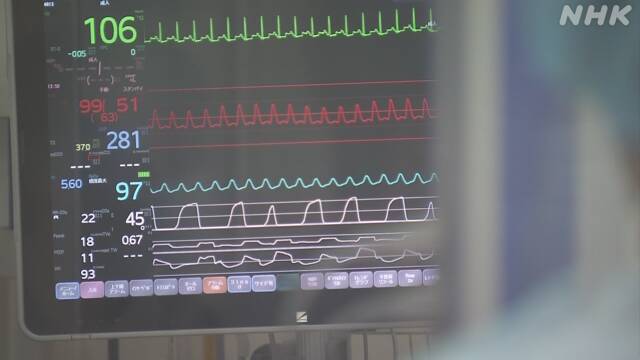Severely ill patients with the new coronavirus are treated with ventilators, heart-lung machines, and ECMO, but the survival rate of critically ill patients receiving these treatments is high for the spread of infection this winter. Even though the number is increasing, it is slightly improved compared to last spring's "first wave", according to a survey by an organization that summarizes intensive care.
It seems that the background is the improvement of treatment for critically ill patients, but experts are calling for thorough infection control, saying that if the number of critically ill patients continues to increase, the number of patients who cannot be saved will increase.
According to "ECMO net" which summarizes the treatment of critically ill patients, the lifesaving rate recovered by treatment of patients who received treatment using a respirator or artificial cardiopulmonary device = "ECMO" is the "first wave" of infection last year. From February to June it was 73.3%, from July to November it was 78.6%, and from December until the 21st of this month, 697 out of 896 patients have recovered, and the number of severely ill patients is in the past. The lifesaving rate is 77.8%, which is 4.5 points higher than the first wave, even though the number of updates continues.
In the "first wave", the rate of transition from ventilator to ECMO treatment was 1 in 4 due to deterioration, but now it is 1 in 12 people.
It is believed that the increase in lifesaving rates is due to the widespread recognition of highly effective treatments such as lie down when wearing anti-inflammatory drugs and ventilators.
On the other hand, for patients treated with ECMO, the lifesaving rate is currently 64.5%, which is declining compared to 69.5% in the first wave, and while the number of patients who can save lives with a ventilator is increasing, it is more serious. It is believed that people who are in a state of illness are getting treatment for ECMO.
Dr. Nobuhiro Takeda, the representative of ECMOnet, said, "The severity of patients who have been treated for ECMO is high, and the treatment days are getting longer due to the continuation of very severe treatment. The number will increase. The only countermeasure is to reduce the number of infected people. "
Hospital "The acceptance system is just barely"
Kawaguchi Cardiology and Respiratory Hospital, a hospital specializing in cardiovascular and respiratory diseases in Kawaguchi City, Saitama Prefecture, accepts critically ill patients from the early stages of infection with the new coronavirus, and provides ventilators, heart-lung machines, and ECMOs. I am doing the treatment that I used.
According to the hospital, we initially prepared 4 beds for critically ill patients with the new coronavirus and started accepting them, but in December last year we increased the number to 6 beds, and the number of patients increased further at the beginning of the year, and patients with prolonged treatment. Since there are some, we have renovated the building and increased it to 10 beds from this week.
On the other hand, in order to secure 10 beds, the number of beds used by patients with pneumonia other than the new corona will be reduced by 16, and hospitalization for other diseases, which has been received by about 20 to 30 people, has been halved. That is.
Su.
Dr. Shinhiro Takeda, the director of the hospital and the representative of ECMOnet, said, "Treatment of artificial respirators and ECMO does not automatically recover if the patient is equipped with a device, and it is necessary to see the patient at a hospital that can accept critically ill patients. The system for accepting critically ill patients is very close. "

